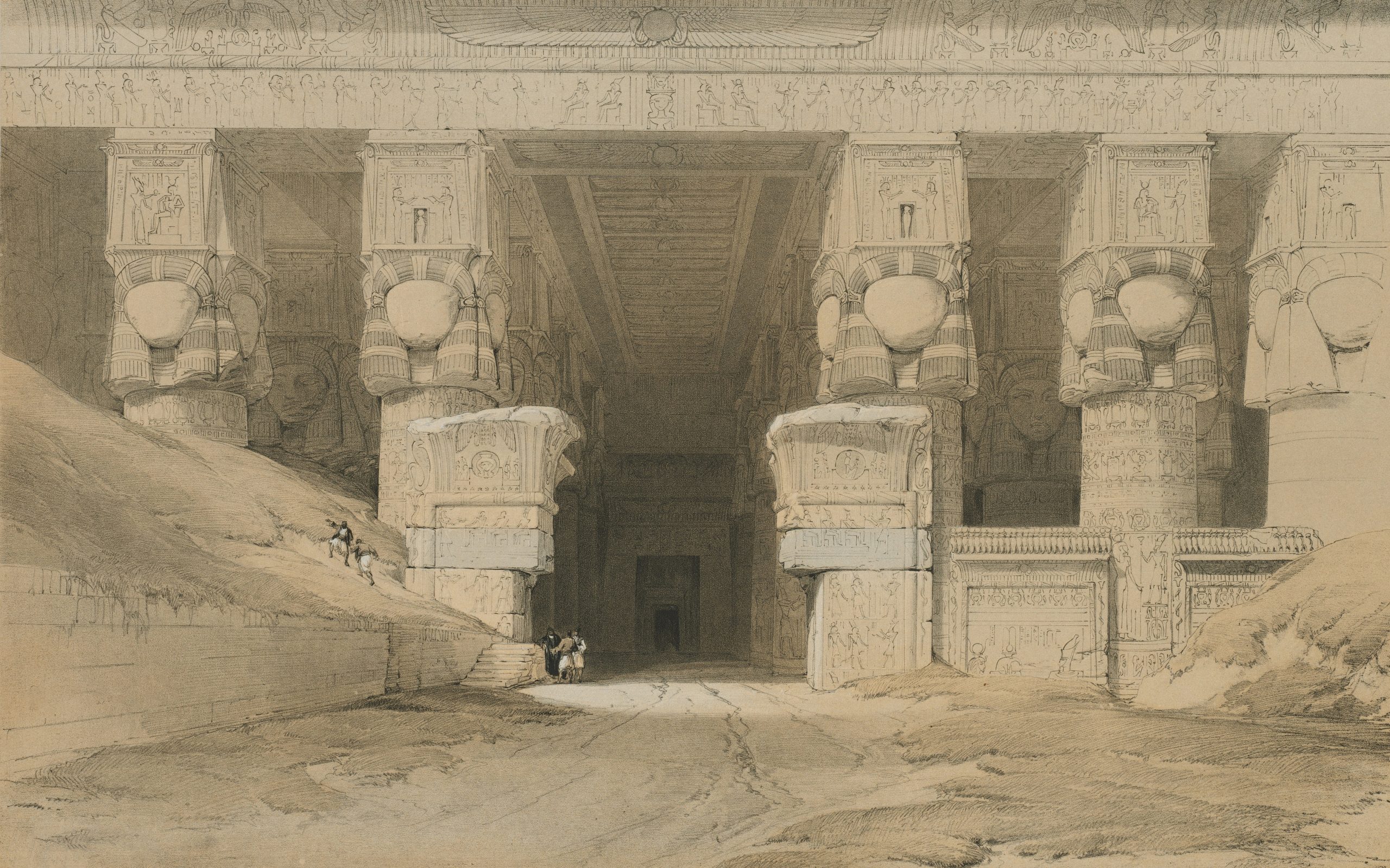This website uses cookies so that we can provide you with the best user experience possible. Cookie information is stored in your browser and performs functions such as recognising you when you return to our website and helping our team to understand which sections of the website you find most interesting and useful.

By Hesham Elgammal on 07 Apr 2025
You’ve seen scary mummies in several movies. You’ve also witnessed the magnificence of the pyramids and deserts. But what you haven’t seen so far is the Step Pyramid of Djoser. It’s one of the most amazing archaeological structures in the world.
Djoser was built 4,700 years ago and as per archaeologists, it’s the first ever pyramid that the ancient Egyptians built. It’s so interesting to go back in time and understand when and why certain structures were built. And Egypt will forever be a subject that enthralls everyone in the world.
Do you wish to know more about the oldest pyramid in the world? If the answer’s a YES, keep reading as we will unravel everything you need to know about Djoser. This will make your upcoming Egypt sightseeing trip even more fruitful.
A Little Something You Should Know About the Step Pyramid
The Step Pyramid is a marvel of architecture across the globe. It’s something that had never been attempted before, especially in Egypt. You may be aware that pyramids were built to bury kings, but earlier, they were buried in rectangular tombs or mastabas that were built above the underground chamber.
The Step Pyramid is a series of mastabas that are stacked one on another. Each level is a little smaller than the one right under to give it a pyramid shape.
In earlier times, mastabas were constructed with clay brick, but the Djoser was built using limestone blocks. If you ever get to look at the blocks closely, you will find carved tree images. These trees are sacred to the Egyptian gods.
RELATED: EVERYTHING YOU NEED TO KNOW ABOUT TRAVELLING IN EGYPT
Who Built the Step Pyramid?
Egyptian ruler Djoser wanted to stand tall and above all his predecessors. He appointed the royal vizier Imhotep to build a brilliant structure that is fit for the Gods on Earth.
Since this happened thousands of years ago, it is a little unclear whose ideas it was. Archaeologists have tried to reason, and they believe that the royal vizier himself came up with the spectacular design.
Imhotep had in-depth knowledge about medicine, architecture, and the arts, so Djoser trusted his expertise. He was also one of the most respected and influential members of Djoser’s royal court. Besides Saqqara’s pyramid complex, Imhotep may have designed a number of structures in Memphis.
CHECK OUT OUR RANGE OF EGYPT TOUR PACKAGES
The Reason for Building the Step Pyramid at Saqqara
Imhotep and the architects who were closely working on the project chose Saqqarah as the site because it overlooked Memphis city.
Back in those times (thousands of years ago), dead pharaohs had to be buried in a structure that kept them separate from any human being living and walking on Planet Earth.
That’s the reason why certain burial protocols were followed. If anyone failed to abide by these rules, the pharaoh would not be able to reach the other world and enjoy his afterlife.
Visit the Magnificent Djoser Step Pyramid
Let’s face it: the structure of the Step Pyramid is intriguing.
If you want to see the oldest pyramid in the world, it has to be Djoser. Book a sightseeing tour and make sure you see one of the marvels of the world, which includes Djoser! You will be intrigued by the structure and the overall beauty of the pyramid and the surroundings.
Tucked away in the vast desert landscape of Saqqara lies one of Egypt’s most groundbreaking achievements: the Pyramid of Djoser, also known as the Step Pyramid. As of 2025, this ancient wonder continues to amaze visitors with its historical importance, architectural ingenuity, and restored grandeur.
Built around 2630 BC during Egypt’s Third Dynasty, the Step Pyramid was designed for Pharaoh Djoser by his chief architect Imhotep, who is often credited as the first known engineer in history. Unlike the smooth-sided pyramids that came later, Djoser’s pyramid is composed of six stacked mastabas, forming a step-like structure that rises approximately 60 meters above the desert floor. This innovative design marked a significant evolution from traditional flat tombs to monumental stone architecture, laying the foundation for future pyramid construction across Egypt.
Over the years, time and natural disasters took a toll on the pyramid. A major earthquake in 1992 caused severe internal damage, threatening the pyramid’s stability. Fortunately, a large-scale restoration project launched in the early 2000s successfully preserved this treasure. After more than 14 years of careful work—including reinforcing the burial chamber and restoring original stonework—the Step Pyramid reopened to the public in 2020. Since then, the site has continued to improve its visitor experience with guided tours and new educational signage, making it even more captivating in 2025.
Visitors today can explore not only the Step Pyramid itself but also the surrounding Saqqara necropolis, home to numerous tombs, temples, and artifacts. It’s a must-visit site for history buffs and curious travelers alike. Just a 40-minute drive south of Cairo, Saqqara offers a peaceful yet powerful journey into Egypt’s ancient soul.
Conclusion
The Pyramid of Djoser stands as a proud symbol of Egypt’s architectural and cultural heritage. In 2025, it’s more accessible and awe-inspiring than ever before, thanks to ongoing preservation efforts and enhanced visitor services. Whether you’re tracing the roots of pyramid design or simply seeking a unique historical experience, a trip to the world’s oldest pyramid offers an unforgettable look into the brilliance of ancient Egypt. Don’t just read about history—walk among it at Saqqara.
This article was updated and re-written in part by Hesham El Gammal; on April 7th, 2025 + fact-checked.
Categories
- Egypt and Jordan Tours (12)
- Egypt Destinations (26)
- Egypt Nile Cruises (40)
- Egypt Sightseeing (14)
- Egypt Tour Packages (17)
- infographics (1)
-

Nile Cruisers Reviews
25 Mar 2025
-

Why Choose Nile Cruisers to Book Your Egypt Nile Cruise?
12 Dec 2025
-

Celebrate Christmas in Egypt: Best Egypt Travel Tour Packages for Year-End Getaways
12 Dec 2025
-

Make Your Year-End Special: Festive Egypt Tour Packages for Winter Travel
12 Dec 2025
-

The Lake Nasser Luxury Cruise Ships
09 Dec 2025
-

Sacred Egypt – Spiritual Tours
07 Dec 2025
-

Nile Cruise from Cairo to Aswan
06 Dec 2025
-

Nile Cruisers Reviews
25 Mar 2025
-

Why Choose Nile Cruisers to Book Your Egypt Nile Cruise?
12 Dec 2025
-

Celebrate Christmas in Egypt: Best Egypt Travel Tour Packages for Year-End Getaways
12 Dec 2025
-

Make Your Year-End Special: Festive Egypt Tour Packages for Winter Travel
12 Dec 2025
-

The Lake Nasser Luxury Cruise Ships
09 Dec 2025













Comments